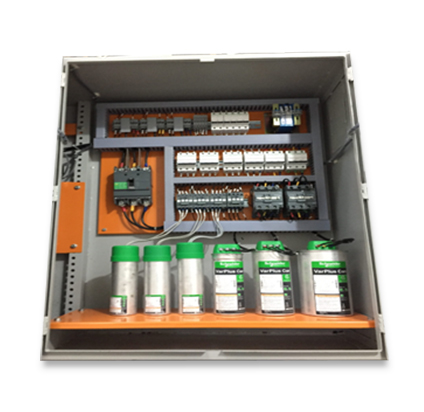The Ultimate Guide to APFC Panels: How They Work and Why Your Business Needs One
Introduction
In today’s technologically advanced world, businesses face constant challenges in managing their electrical systems efficiently. High energy consumption, fluctuating power factors, and rising electricity costs are some of the critical concerns for industrial and commercial establishments. To address these issues, Automatic Power Factor Control (APFC) panels have emerged as indispensable components in modern electrical systems. In this comprehensive guide, we will explore how APFC panels work and the reasons why your business needs one.
Understanding Power Factor
Before delving into APFC panels, it’s essential to understand power factor and its significance. A system’s power factor is an indicator of how efficiently electricity is used. It is the ratio of real power (kW) to apparent power (kVA) and is represented as a decimal or a percentage.
A power factor of 1 (or 100%) is ideal, indicating that all the power supplied to the system is used efficiently. However, many industrial and commercial facilities suffer from a poor power factor, typically below 0.95. This is due to the presence of inductive loads like motors, transformers, and fluorescent lighting, which cause reactive power (kVAR) to flow in the system, reducing the overall efficiency.
The Need for Power Factor Correction
A low power factor results in several adverse effects:
- Increased Energy Costs: Low power factor leads to higher electricity bills as the utility companies charge for both real and reactive power. A poor power factor means you are paying for energy that is not being utilized efficiently.
- Overloaded Electrical Systems: Inadequate power factor forces electrical systems to handle more current to deliver the required power, leading to equipment overheating and premature failure.
- Reduced System Capacity: A system with a low power factor has a reduced capacity to handle additional loads, potentially limiting your business’s growth.
- Environmental Impact: Higher energy consumption due to a low power factor contributes to increased greenhouse gas emissions, negatively impacting the environment.
How APFC Panels Work
Automatic Power Factor Correction (APFC) panels are sophisticated devices designed to optimize the power factor of electrical systems automatically. These panels are equipped with capacitors that generate reactive power in real-time, counteracting the reactive power drawn by inductive loads.
Here’s how APFC panels work:
- Power Factor Monitoring: The APFC panel continuously monitors the power factor of the connected electrical system using power factor controllers.
- Reactive Power Calculation: Based on the power factor readings, the APFC panel calculates the reactive power required to improve the power factor to the desired level.
- Capacitor Bank Activation: Once the reactive power requirement is determined, the APFC panel activates and deactivates capacitor banks accordingly to generate reactive power.
- Power Factor Optimization: By injecting the appropriate amount of reactive power, the power factor is raised to the desired level (usually close to 1), thus ensuring efficient energy utilisation.
Benefits of APFC Panels for Your Business
Implementing APFC panels in your business offers several advantages:
- Reduced Energy Costs: APFC panels help maintain a high power factor, resulting in reduced electricity bills by avoiding penalties for low power factor and optimizing energy usage.
- Enhanced System Efficiency: By improving the power factor, APFC panels relieve electrical systems from excessive reactive currents, reducing losses and enhancing overall efficiency.
- Increased Equipment Lifespan: With a better power factor, equipment experiences reduced stress and operates more reliably, leading to longer lifespans and decreased maintenance costs.
- Greater System Capacity: By mitigating the effects of low power factor, APFC panels free up system capacity, allowing for additional loads or expansions without the need for costly upgrades.
- Environmental Sustainability: Optimising energy usage leads to lower energy consumption and, subsequently, reduced greenhouse gas emissions, making your business more environmentally friendly.
Conclusion
In conclusion, Automatic Power Factor Control panels play a crucial role in ensuring efficient energy usage and maintaining a high power factor for industrial and commercial establishments. By automatically correcting power factor imbalances, these panels help businesses reduce energy costs, enhance system reliability, and contribute to a more sustainable future.
Investing in an APFC panel is a wise decision for any business looking to improve its electrical system’s efficiency, reduce operational expenses, and increase its overall competitiveness in today’s energy-conscious world. Take the step towards a more energy-efficient future by incorporating an APFC panel into your business’s electrical infrastructure.







